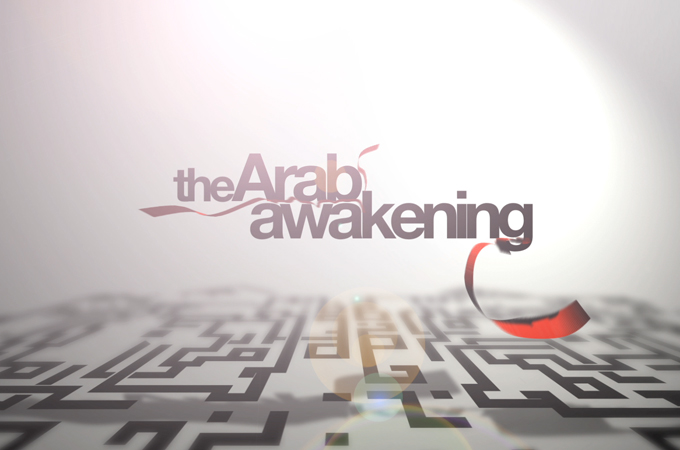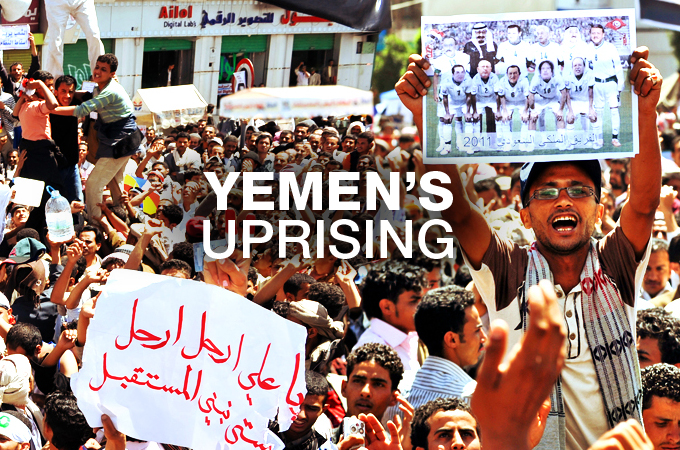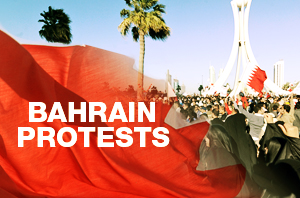The Arab awakening
Tunisia, Egypt, Libya, Bahrain: A roundup of the popular protests that have swept the region over the last few months.

 Click on a highlighted country above for Al Jazeera’s coverage of those protests.
Click on a highlighted country above for Al Jazeera’s coverage of those protests.
The world’s attention has been focused on a handful of countries – Tunisia, Egypt, Bahrain and Libya – since the first popular protests broke out in Tunisia in December. But nearly a dozen countries in the region have seen political unrest, and the protest movement shows no signs of stopping.

Below is a summary of the demonstrations so far, and links to our coverage. You can also click a country on the map above for more information.
Al Jazeera is also airing a series of seven hour-long programmes which offer fresh insights into what happened in the region and why. The first half of the series takes viewers behind the scenes of the Tunisian and Egyptian revolutions, with access to the people who made them happen. The second half stands back to debate their place in history, global politics and everyday life.
To view the series, check our Arab Awakening programmes page.
Full coverage:







Elsewhere around the region:
Jordan
Protests in Jordan started in mid-January, when thousands of demonstrators staged rallies in Amman and six other cities. Their grievances were mostly economic: Food prices continue to rise, as does the country’s double-digit inflation rate.
Jordan’s King Abdullah tried to defuse the protests in early February by sacking his entire cabinet. The new prime minister, Marouf Bakhit, promised “real economic and political reforms.”
But the firing – Abdullah’s perennial response to domestic unrest – did little to dampen the protests. Thousands of people took to the streets once again on February 18 to demand constitutional reforms and lower food prices. At least eight people were injured during that rally.
Scattered demonstrations have continued every few weeks, reaching their peak in mid-July, when police used batons to break up a demonstration in Amman. Dozens of people were injured, including several journalists, who say they were targeted by security forces.
Corruption continues to be a chief complaint among the protesters, but the government has done little to combat graft. Indeed, the prime minister and more than a dozen other cabinet officials were recently cleared of any involvement in a casino scandal which caused widespread public outcry.
Saudi Arabia
King Abdullah has tried to head off unrest in the kingdom with a series of economic reforms valued at 135 billion Saudi rials ($36 billion).
The new initiatives, aimed at Saudi citizens, include housing subsidies; unemployment benefits; and a programme to give permanent contracts to temporary government workers. State employees will receive 15 per cent raises.
The programme was announced on February 23, as Abdullah returned to Riyadh after back surgery in the United States and four weeks spent recovering in Morocco.
Saudi Arabia has not seen the popular protests that have swept other Arab states, but there have been scattered acts of civil disobedience. Women have been leading the way, with several detained for driving as part of a nationwide campaign demanding the right to drive.
Hundreds of people have also reportedly turned out for periodic demonstrations in eastern Saudi Arabia, particularly in the city of Qatif.
Meanwhile, earlier this year, a group of more than 100 prominent intellectuals and academics issued a statement calling for wide-reaching political and economic reforms. It demands an elected “consultative council”; an independent judiciary; and a serious anti-corruption push.
Morocco
The first significant protests in Morocco broke out on February 20, when tens of thousands of people (37,000, according to the country’s interior minister) took to the streets. They were organised by a loose coalition of human rights groups, journalists and labor unions.
Demonstrators demanded not the ouster of King Mohammed VI, but instead a series of more modest reforms. They want the king to give up some of his powers – right now, he can dismiss parliament and impose a state of emergency – and to dismiss his current cabinet. “The king should reign, not rule,” read one banner held by protesters.
The rallies were peaceful, though acts of vandalism did happen afterwards: Dozens of banks were burned down, along with more than 50 other buildings. (The culprits are unknown.)
Simmering unrest reached a peak again on March 20, when thousands of people demonstrated in Rabat, Casablanca, and other cities. Protests flared up once again in early June, when thousands poured into the streets in Rabat to protest the dead of Khaled al-Amari, an opposition member who was reportedly killed by police.
The king responded with a series of modest constitutional reforms, which were approved in a national referendum on July 1. The revised constitution gives the prime minister the authority to appoint cabinet officials and dismiss the parliament, a power previously held by the king; it also makes Berber an official language alongside Arabic.
Lebanon
Hundreds of people staged a rally on a cold and rainy February 27, demanding an end to Lebanon’s sectarian political system.
A decades-old power-sharing system requires Lebanon to have a Maronite Christian president, a Sunni prime minister and a Shia parliament speaker. Protesters argued that the system perpetuates sectarian tensions in Lebanon.
The anti-sectarian protesters continued their demonstrations with a rally on March 6 and several sit-ins outside government buildings. Another rally in Beirut, this one on March 20, drew perhaps 10,000 protesters, more than three times the size of the previous march.
“This shows how important the cause is, and we are only going to keep pushing forward,” said Omar Deeb, one of the organisers of the protests.
Oman
This normally-sleepy Gulf state saw deadly protests on February 27, when at least two people were killed during a rally in the industrial town of Sohar.
Roughly 2,000 people attended the rally, according to witnesses. Police officers used tear gas, batons and rubber bullets on the crowd.
Protesters were angry about corruption, unemployment and the rising cost of living in Oman. Sultan Qaboos bin Said, the country’s ruler since 1970, tried to head off further unrest by announcing a new job-creation programme and expanded subsidies to the unemployed.
A separate rally also took place in the southern city of Salalah.
Iraq
Thousands of people have rallied in the northern province of Sulaymaniyah during four days of protests over corruption and the economy. At least five people were killed, and dozens more injured, by Kurdish security forces who opened fire on the crowds during those rallies.
Several other small protests have popped up across the country in recent days: Nearly 1,000 people in Basra demanded electricity and other services; 300 people in Fallujah demanded that the governor be sacked; dozens in Nassiriyah complained about unemployment.
Protests reached a crescendo on February 25, when thousands demonstrated in the capital and elsewhere. At least six people were killed in two demonstrations in northern Iraq.
Iraqi protesters, unlike their counterparts in many other countries, are not (yet) calling for the government’s ouster. Instead, they’re demanding better basic services: electricity, food, and an effort to stamp out corruption.
In response to the unrest, the Iraqi parliament adjourned for a week, its members instructed to travel home and meet with constituents – an odd response, perhaps, given that the government’s inaction is a leading cause of popular anger.